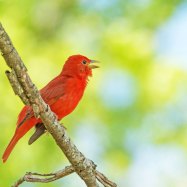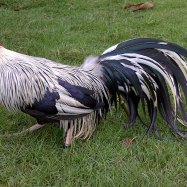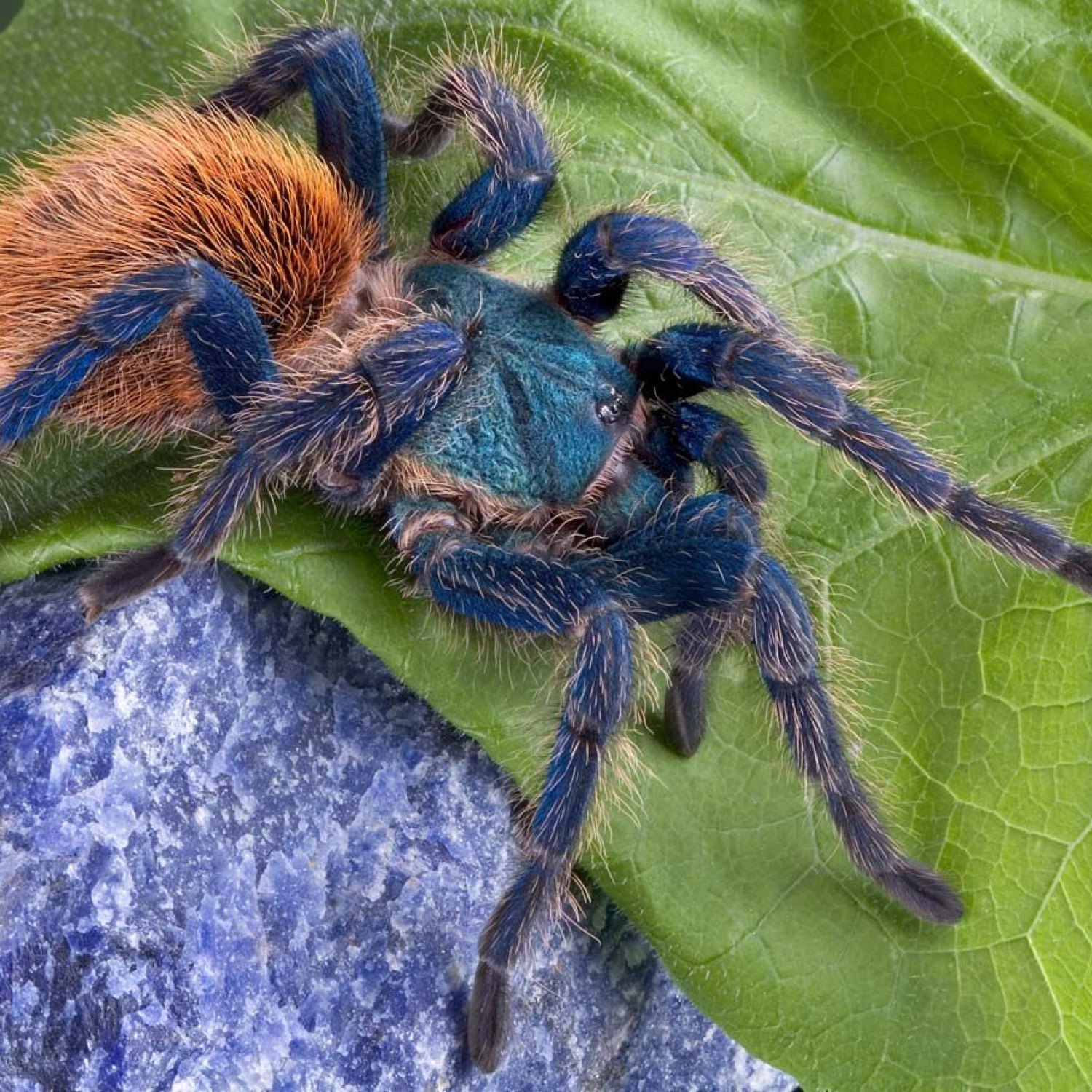
Tarantula
Varies depending on species, ranging from 2.5 to 10 inches (6 to 25 centimeters)
Tarantulas are fascinating creatures that can be found in various habitats worldwide. They belong to the family Theraphosidae and have a large, hairy body with eight legs and two fangs. The length of these creatures varies depending on the species, ranging from 2.5 to 10 inches. Despite their intimidating appearance, tarantulas are not aggressive and make for interesting pets for advanced spider enthusiasts. Just make sure to do your research before bringing one home! #tarantulas #spiders #pets
Animal Details Summary:
Common Name: Tarantula
Kingdom: Animalia
Habitat: Varied habitats including forests, deserts, grasslands, and marshes
The Fascinating World of Tarantulas
Walking through the lush rainforests of South America, you can't help but feel a sense of awe and wonder at the diverse array of animals that call this place home. Some are small and delicate, blending seamlessly into their surroundings, while others are large and imposing, demanding your attention. One such animal that falls into the latter category is the infamous tarantula.Tarantulas, scientifically known as Theraphosidae, are a type of arachnid belonging to the class Arachnida and the order Araneae Tarantula. These creatures have a long history, with fossils dating back over 380 million years. While their presence may evoke fear and disgust in some people, tarantulas are actually incredibly fascinating animals with unique characteristics.
Habitat and Distribution
One of the most remarkable things about tarantulas is their ability to adapt to various habitats. These creatures can be found all over the world, on every continent except Antarctica. They have been known to thrive in forests, deserts, grasslands, and even marshes, showcasing their remarkable resilience and adaptability.Tarantulas do not have a specific country of origin, as they can be found in different parts of the world. Some species are native to the Americas, while others can be found in Asia, Africa, and even Europe. This widespread distribution has allowed tarantulas to evolve and thrive in different environments, making them a truly global species.
Physical Characteristics
One of the most distinctive features of tarantulas is their large, hairy bodies Turkish Angora. These creatures can range in size from 2.5 to 10 inches, depending on the species, making them one of the largest spiders in the world. Despite their large size, tarantulas are surprisingly agile and can move quickly when needed.Tarantulas have eight legs, two fangs, and four pairs of eyes, giving them excellent vision. Their bodies also have specialized hairs, which they use to sense their environment, detect prey, and defend themselves against predators. Some tarantula species even have vibrant and striking colors, making them some of the most eye-catching animals in the wild.
Feeding and Diet
Like most spiders, tarantulas are carnivorous, meaning they feed on other animals. These creatures prefer to hunt at night, using their excellent eyesight and sense of touch to locate their prey. They primarily feed on insects, but larger tarantulas have been known to take down small mammals, reptiles, and even birds.One of the most intriguing aspects of tarantulas is the way they capture their prey. Unlike other spiders that use webs, tarantulas use their strong, hairy legs to ambush their victims. They have retractable claws on their feet, which they use to grab and hold onto their prey. Once captured, they use their two fangs to inject venom into their prey, paralyzing them.
Behavior and Threats
Tarantulas are solitary creatures and usually only come together during the mating season. They are generally docile and non-aggressive, but when threatened, they will use their fangs to defend themselves. However, their venom is not considered dangerous to humans, and their bites are rarely fatal. Most species of tarantulas are harmless to humans and are a crucial part of their local ecosystems.Despite their non-threatening nature, tarantulas do have some natural predators. Birds, snakes, lizards, and larger spiders are known to prey on them. However, tarantulas have developed various defense mechanisms, such as camouflage, speed, and venom, to protect themselves against these predators.
Conservation and Importance
Tarantulas play a crucial role in their respective ecosystems. They help control the population of insects, which can be essential for maintaining a balanced and healthy environment. In some cultures, tarantulas are also used for their medicinal properties, with their venom being used to create pain-relieving medication.Despite their importance and widespread distribution, some species of tarantulas are facing threats to their population. Habitat destruction, illegal pet trade, and climate change are all contributing factors to the decline of some tarantula species. Conservation efforts, such as protecting their habitats, educating the public, and regulating the pet trade, are necessary to preserve these fascinating creatures for future generations.
In Conclusion
Tarantulas may seem like scary and dangerous creatures, but their presence in the animal kingdom is essential. These creatures have evolved over millions of years, developing unique characteristics and behaviors that make them some of the most fascinating animals on the planet. From their adaptability to their hunting techniques, tarantulas are an incredible example of the diversity and resilience of the natural world.So, the next time you spot a tarantula in the wild, take a moment to appreciate its beauty and importance in the ecosystem. And remember, while they may seem intimidating, these creatures are not monsters, but rather a vital part of our world's biodiversity.

Tarantula
Animal Details Tarantula - Scientific Name: Theraphosidae
- Category: Animals T
- Scientific Name: Theraphosidae
- Common Name: Tarantula
- Kingdom: Animalia
- Phylum: Arthropoda
- Class: Arachnida
- Order: Araneae
- Family: Theraphosidae
- Habitat: Varied habitats including forests, deserts, grasslands, and marshes
- Feeding Method: Carnivorous
- Geographical Distribution: Found on all continents except Antarctica
- Country of Origin: Various countries around the world
- Location: Various habitats worldwide
- Animal Coloration: Varies depending on species, ranging from brown to black, with some species featuring vibrant colors
- Body Shape: Large, hairy bodies with eight legs and two fangs
- Length: Varies depending on species, ranging from 2.5 to 10 inches (6 to 25 centimeters)
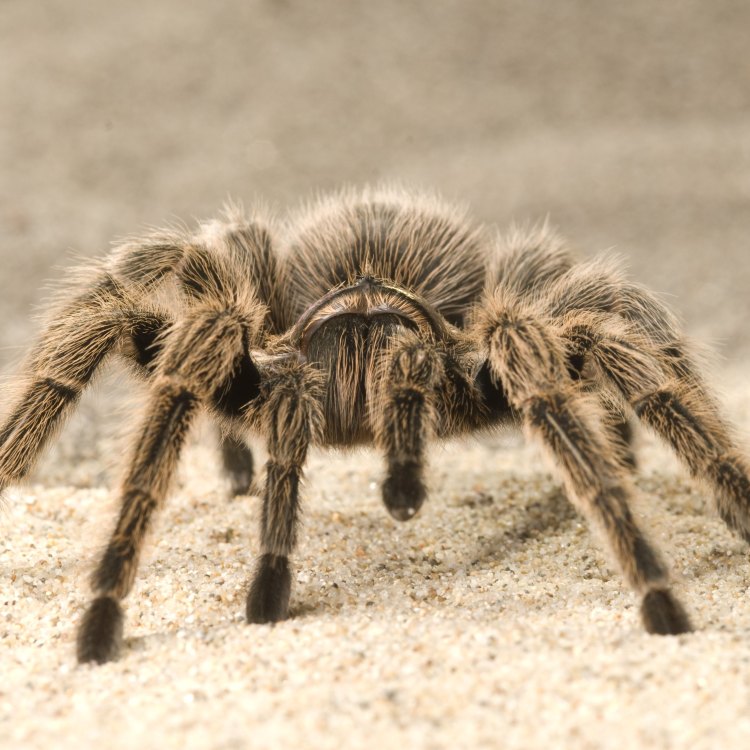
Tarantula
- Adult Size: Varies depending on species, ranging from small to very large
- Average Lifespan: 10 to 30 years
- Reproduction: Sexual
- Reproductive Behavior: Males court females and deposit sperm into a silk sac, which the female later retrieves to fertilize her eggs
- Sound or Call: Some tarantula species can produce hissing or stridulation sounds by rubbing body parts together
- Migration Pattern: Some tarantula species exhibit seasonal migrations in search of food or mates
- Social Groups: Most tarantulas are solitary animals, but some live in communal burrows or exhibit social behaviors
- Behavior: Tarantulas are generally nocturnal and spend most of their time in burrows or hidden habitats
- Threats: Habitat loss, illegal collection for the pet trade, and climate change
- Conservation Status: Varies depending on species, with some considered endangered or vulnerable
- Impact on Ecosystem: Tarantulas play a role in regulating insect populations and are prey for other animals
- Human Use: Some tarantula species are kept as pets, and their venom is studied for potential medical purposes
- Distinctive Features: Large size, hairy bodies, and venomous fangs
- Interesting Facts: 1. Tarantulas can regenerate lost body parts. 2. Some tarantulas have a lifespan of up to 40 years. 3. Tarantulas molt their exoskeleton to grow. 4. They use venom to immobilize their prey. 5. Female tarantulas can live longer than males.
- Predator: Birds, reptiles, and some mammals prey on tarantulas
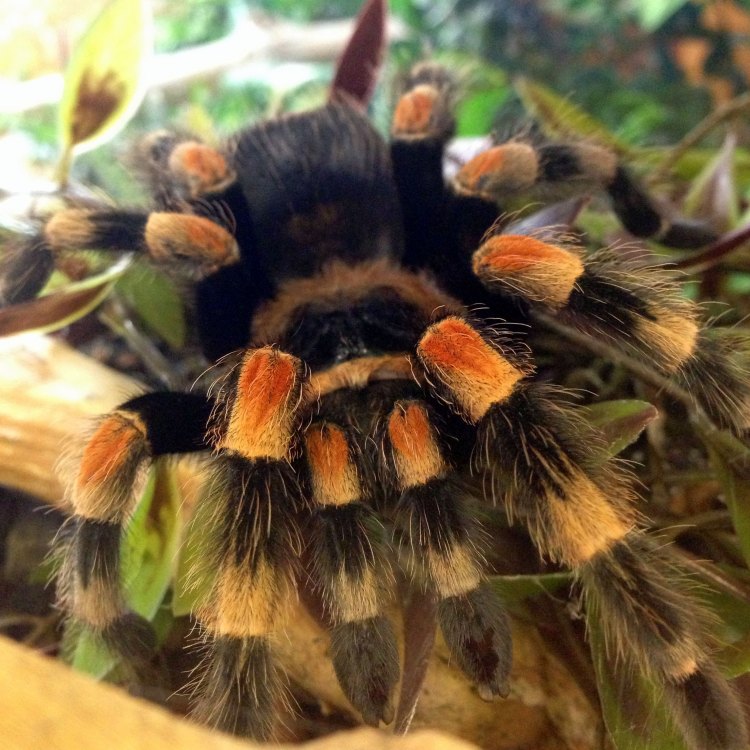
Theraphosidae
Tarantulas: Fascinating Creatures of the Spider World
Tarantulas are creatures that evoke both fascination and fear in us. The thought of a large, hairy spider with venomous fangs may send shivers down our spine, but these creatures have many unique features that make them an essential part of our ecosystem. In this article, we will delve into the world of tarantulas and discover the amazing traits that make them one of the most fascinating creatures of the spider kingdom.Size and Lifespan
Tarantulas belong to the family Theraphosidae, and there are over 1000 known species spread across different continents, except Antarctica PeaceOfAnimals.Com. They come in various sizes, with some species being small and others being quite large. The smallest tarantula species, such as the Pink Zebra Tarantula, have a leg span of only 2.5 centimeters, while the largest, the Goliath Birdeater Tarantula, can have a leg span of up to 30 centimeters.
Their size also varies depending on their age, with young tarantulas being smaller and growing as they molt and shed their exoskeleton. These fascinating creatures can live for a long time, with an average lifespan of 10 to 30 years. However, some species, like the Brazilian Salmon Pink Tarantula, have been known to live up to 40 years, making them one of the longest-living arthropods on the planet.
Reproduction
Like most spiders, tarantulas reproduce sexually. Males use their sense of smell to locate females and try to attract them by using pheromones and vibrations. They perform elaborate courtship dances to impress the females and woo them for mating Towhee. Once the male is successful, he deposits his sperm into a small silk sac, which the female later retrieves to fertilize her eggs. This process can take up to 8 hours, and the male must be careful not to be mistaken for prey and attacked by the female.
Interestingly, male tarantulas have a shorter lifespan than females, with many dying soon after mating. This is because the males put all their energy into the mating process, leaving them weak and vulnerable to predators. In contrast, females can mate multiple times in their lifetime and can even store the sperm for later use.
Reproductive Behavior
The reproductive behavior of tarantulas is quite unique. Unlike other spiders that lay their eggs in webs, female tarantulas create a sticky silk sac to protect the eggs. This sac is either attached to their bodies or kept hidden in burrows or underground chambers. The number of eggs varies depending on the species, with some laying only a few dozen, while others can lay up to a thousand.
The female tarantula is highly protective of her eggs and will guard them until they hatch. She will often turn the eggs and keep them warm by using her body heat. Once the spiderlings hatch, they are left to fend for themselves, and the female may even see them as prey if they come near her.
Sound or Call
When we think of spiders, we often don't associate them with sound. However, some tarantula species can produce hissing or stridulation sounds by rubbing their body parts together. This sound is often used for communication between males and females during mating or as a warning to predators. The sound can be quite loud and can also be used to intimidate other spiders during territorial disputes.
Migration Pattern
Some tarantula species exhibit seasonal migrations in search of food or mates. This usually occurs during the wet season when the chances of finding food and a mate are higher. These migrations can cover long distances, and some tarantulas have been known to travel up to a mile in search of suitable habitats. Interestingly, they use silk to navigate during their journey, leaving a trail behind them that they can follow back if they need to return to their original habitat.
Social Groups
Most tarantulas are solitary animals, and as adults, they prefer to live alone. However, there are some exceptions, with some species living in communal burrows or exhibiting social behaviors. For example, the Mexican Redknee Tarantula is known for living in groups, and sometimes up to 20 individuals can inhabit the same burrow. These groups are usually made up of one male and several females, and they work together to protect their territory and raise their offspring.
Behavior
Tarantulas are often seen as aggressive and dangerous, but the truth is, they are quite shy and will often try to avoid confrontation. They are mostly nocturnal and spend their days hidden in burrows or other hidden habitats, only coming out at night to hunt for food. Their main prey consists of insects, but larger species have been known to eat frogs, lizards, and even small birds.
When threatened, tarantulas have several defense mechanisms. Their first line of defense is to retreat to a safe location or hide in their burrow. However, if that is not possible, they may use their urticating hairs, which are small, barbed hairs on their abdomen, to irritate the predator. They can also use their venomous fangs to defend themselves, but this is usually a last resort as it takes a lot of energy and time for them to replenish their venom.
Threats and Conservation Status
Like many other species, tarantulas face threats in the wild from habitat loss, illegal collection for the pet trade, and climate change. These threats, along with slow reproduction rates, have led to some tarantula species being considered endangered or vulnerable. However, the exact conservation status varies depending on the species and their habitat. Some species, like the Cobalt Blue Tarantula, are not as threatened as others due to their isolated habitats, while others, like the Gooty Sapphire Ornamental Tarantula, are critically endangered due to habitat destruction.
Impact on Ecosystem
Despite their intimidating appearance, tarantulas play a vital role in regulating insect populations. They are also an essential food source for other animals, such as birds, reptiles, and some mammals. Without tarantulas, there could be a significant imbalance in our ecosystem, as their prey may multiply and cause damage to the environment. This is why it is crucial to protect these creatures and their habitats.
Human Use
Some tarantula species, such as the Mexican Redknee Tarantula, are popular in the exotic pet trade. However, this has led to over-harvesting of wild populations and has caused a decline in their numbers in the wild. Another use of tarantulas is the study of their venom for potential medical purposes. Scientists believe that tarantula venom may have properties that could aid in pain relief and the treatment of neurological disorders.
Distinctive Features
Tarantulas are easily recognizable by their large size, hairy bodies, and venomous fangs. These features make them stand out compared to other spiders, and they have been portrayed in countless books, movies, and TV shows as terrifying creatures. However, these features also make them unique and crucial to our ecosystem.
Interesting Facts
Apart from their distinctive features, tarantulas also have some interesting facts that make them even more fascinating. Here are a few:
1. Tarantulas can regenerate lost body parts, including limbs, eyes, and pedipalps (the structures they use to manipulate food).
2. Some tarantula species have a lifespan of up to 40 years, making them one of the longest-living arthropods.
3. Tarantulas molt their exoskeleton to grow, shedding their old skin multiple times throughout their lifetime.
4. They use venom to immobilize their prey, not to directly attack humans. Most species have venom that is not potent enough to harm humans, and their bites are usually only dangerous for those who are allergic.
5. Female tarantulas can live longer than males, with some species living up to 10 years longer.
Predators
Despite their large size and venomous fangs, tarantulas have predators in the wild. Birds, reptiles, and some mammals, such as opossums and skunks, are known to prey on these spiders. However, their main defense mechanisms, such as hiding and using their urticating hairs, have proven to be effective in keeping them safe from most predators.
Conclusion
Tarantulas are often misunderstood creatures, but as we have seen, they play an essential role in our ecosystem. These fascinating creatures have unique features, behaviors, and characteristics that make them stand out in the world of spiders. While they may not be everyone's favorite animal, they deserve our respect and protection, as they are an integral part of our environment. So, the next time you see a tarantula, don't be afraid, but marvel at the wonderful and amazing creature that it is.
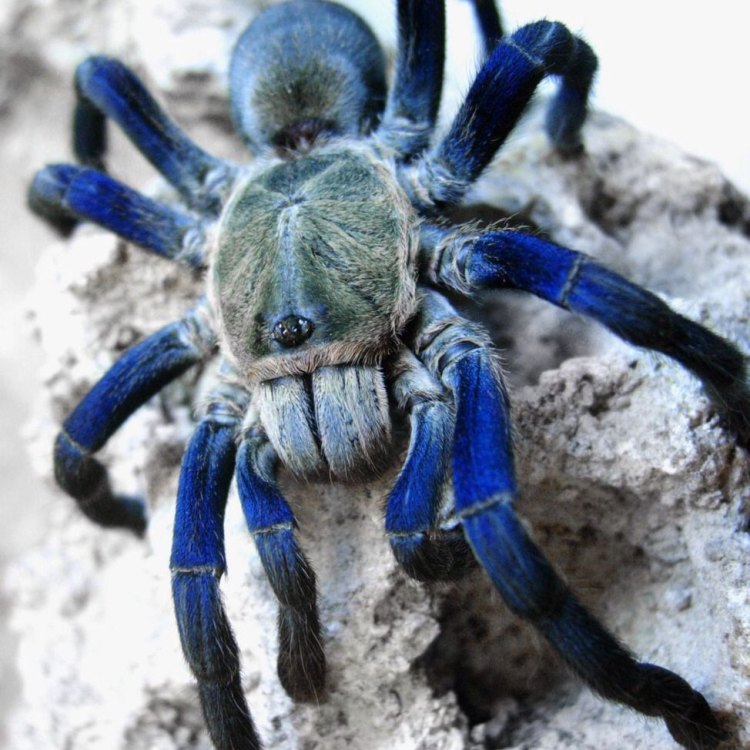
The Fascinating World of Tarantulas
Disclaimer: The content provided is for informational purposes only. We cannot guarantee the accuracy of the information on this page 100%. All information provided here may change without prior notice.


